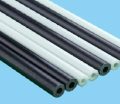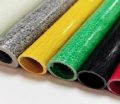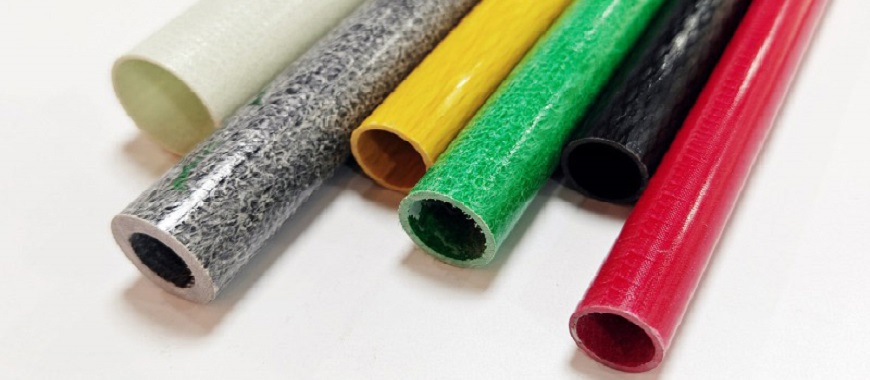
Spun fiberglass tube is widely used for various industrial, residential, and commercial applications. Its lightweight nature and resistance to corrosion make it a preferred choice in environments where durability is essential. Highest quality spun fiberglass tube that balance strength-to-weight, cost and radio transparency for clients worldwide. These tubes are known for their adaptability, as they can be used both underground and above ground. In many cases, the rigid fiberglass tube is also utilized in similar applications, offering enhanced strength and rigidity for projects that require a more solid structural support. To meet specific project needs, it’s important to work with a fiberglass tube factory that can provide customized spun fiberglass tube sizes. Spun fiberglass tube sizes are available in standard dimensions, but customized options can also be provided to meet specific project needs. With growing demand, spun fiberglass tube near me searches have become popular for easy sourcing. These tubes offer a cost-effective solution, making them attractive for long-term installations. Whether installed as part of ductwork or standalone infrastructure, spun fiberglass tube ensures excellent performance across applications.
Broad View of Spun Fiberglass Tube
What Is a Spun Fiberglass Tube?
A spun fiberglass tube is a structural component made from glass fibers and resin. It is manufactured using a specialized process where fibers are spun and bonded together to create lightweight, durable tubes. These tubes provide both strength and flexibility, making them suitable for various uses. Different from tapered fiberglass tubes, which gradually reduce in diameter from one end to the other, spun fiberglass tubes maintain a consistent shape throughout their length.
Definition and Manufacturing Process
- Spun fiberglass tube is created through filament winding or centrifugal spinning techniques.
- The process involves layering fibers with resin to achieve the desired thickness and strength.
- Curing occurs under controlled temperatures to ensure consistent quality and long-term performance.
- Tubes can be customized for different projects by adjusting fiber composition and resin types.
Why Choose Spun Fiberglass Tube?
The spun fiberglass tube provides significant benefits that make it a preferred option for many industries. Its unique properties ensure long-term reliability in different environments.
Benefits of Spun Fiberglass Tube
- Lightweight: Easy to transport, install, and handle during both underground and above-ground applications.
- Durable: Resistant to weathering, chemicals, and physical impact, ensuring long-term stability.
- Corrosion-Resistant: Ideal for use in chemical environments, preventing rust and material degradation.
- Low Maintenance: Requires minimal upkeep, reducing overall maintenance costs.
Environmental Adaptability for Underground and Above-Ground Applications
- Suitable for underground ducting due to its resistance to soil moisture and corrosion.
- Performs well above ground, as it withstands exposure to sunlight and temperature variations.
- Case studies show improved longevity when compared to traditional materials like metal or PVC.
- Research highlights its use in chemical processing plants, where corrosion protection is critical.
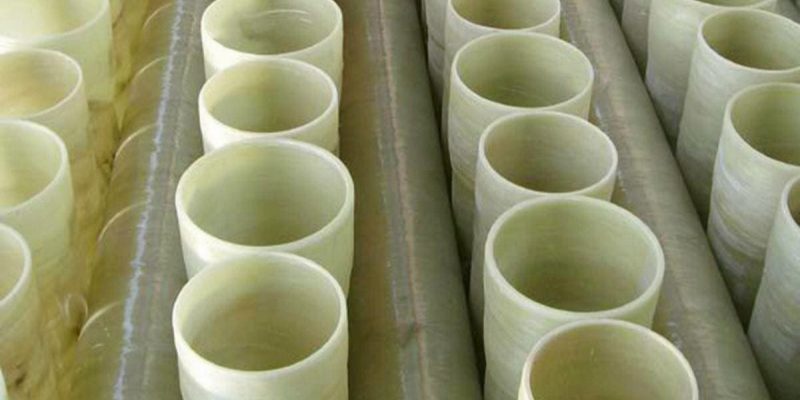
Fiberglass Bath Tube Benefits for Your Home Renovation
Spun Fiberglass Tube Sizes and Availability
Spun fiberglass tube sizes and availability play a crucial role in meeting the needs of various industries. Having access to standard and custom sizes ensures these tubes can adapt to specific project requirements, enhancing their utility and performance. With the right sizing, spun fiberglass tubes provide efficient solutions in both industrial and residential applications.
Standard Spun Fiberglass Tube Sizes
Standard sizes of spun fiberglass tube cater to a range of industrial, commercial, and residential uses. These sizes meet typical project needs while ensuring ease of installation and material optimization.
Overview of Common Tube Sizes for Different Needs
- Small Sizes (1–3 inches):
Ideal for lightweight projects, electrical conduits, or small-scale ducts. - Medium Sizes (4–12 inches):
Suitable for underground drainage systems, ventilation ducts, and support columns in residential construction. - Large Sizes (13–24 inches):
Commonly used in industrial exhaust systems and chemical fume ducts. - Extra-Large Sizes (25 inches or more):
Preferred for large-scale infrastructure, such as water pipelines or factory air circulation systems. - Wall Thickness Variations:
Thickness ranges from 1 mm to several inches, depending on the level of structural strength required.
Custom Sizing Options for Specialized Projects
- Tailored Lengths: Custom-cut tubes reduce material waste and ensure precise fit for specific installations.
- Variable Diameters: Diameters can be adjusted for niche projects like chemical processing or underground ducting.
- Reinforced Layers: Additional layers of fiberglass can be applied to enhance durability for high-stress applications.
- Tapered Ends: Some projects may require tapered ends for easy connections with other components.
- Special Coatings: Coatings may be added for enhanced resistance to extreme temperatures or chemical exposure.
Finding Spun Fiberglass Tube Near Me
At GangLong Fiberglass, we take pride in offering high-quality spun fiberglass tubes that meet the demands of diverse industries. We understand the importance of accessibility, and our goal is to ensure these products are readily available to customers seeking reliable solutions.
Guidance on How to Locate Suppliers or Distributors
- Direct Contact: Start by reaching out to our local representatives to discuss your project needs and tube specifications.
- Regional Warehouses: GangLong Fiberglass operates in multiple locations, making it easy to find spun fiberglass tube near me quickly.
- Bulk Ordering Services: If you need larger quantities, we provide streamlined bulk order options through local distributors.
- Flexible Delivery: Customers can choose between local pick-up and fast shipping services, depending on the project timeline.
Tips for Checking Local Availability and Ordering Options
- Plan Ahead: Early communication with suppliers ensures the right sizes are in stock before the project begins.
- Request Samples: For custom designs, order samples to verify tube dimensions and performance characteristics.
- Inquire About Lead Times: Custom sizes may require longer lead times, so planning accordingly avoids project delays.
- Ask About Discounts: Bulk orders often come with price reductions, making it more economical to order in larger quantities.
- Review Regional Distributors: Check with multiple distributors to compare stock availability and delivery times.
GangLong Fiberglass ensures that customers have access to a broad range of spun fiberglass tube sizes. Whether for standard applications or custom projects, we provide expert guidance and flexible ordering solutions to meet every project’s requirements efficiently.
Pricing and Purchasing Spun Fiberglass Tube
The pricing and purchasing process for spun fiberglass tube plays a significant role in project planning and execution. Understanding the factors influencing costs and identifying reliable sources helps ensure you get the right product for the best value. Spun fiberglass tubes are available in various configurations, and their price is determined by multiple factors, including material quality, customization, and market conditions. Just as fiberglass insulation prices can fluctuate based on similar factors like material grade and demand, the cost of spun fiberglass tubes is also subject to these variables, making it important to stay informed and compare options before making a purchase.
Spun Fiberglass Tube Price Factors
Several elements contribute to the pricing of spun fiberglass tube. Material quality, size variations, and additional customization options directly impact the total cost. Additionally, market fluctuations and seasonal trends affect pricing, which buyers should monitor when planning purchases.
Material Quality, Size, and Customization Impact on Costs
Resin type, fiber content, dimensions, and customization drive spun fiberglass tube prices. Premium resins like vinyl ester or epoxy and higher fiber density boost strength but add raw-material expense. Larger diameters or thicker walls increase material use and production time. Features such as tapered ends, reinforced layers, or special coatings introduce extra labor. Meeting strict certification standards also incurs testing and traceability costs.
Market Trends and Seasonal Price Fluctuations
Pricing reflects both production expenses and external market forces. Demand spikes during spring and summer construction seasons push costs upward. Fiberglass and resin spot prices fluctuate with raw-material inventories and capacity adjustments. Global shipping delays or rising freight rates raise transport fees, especially for large orders. Currency exchange shifts affect international buyers, while inflation and policy changes can prompt suppliers to revise their pricing strategies.
Logistics and Transportation Costs
Bulk and bulky nature make spun fiberglass tubes costly to ship. Container space optimization, insurance premiums, customs duties, and destination‐site offloading requirements all factor into landed cost. Remote or infrastructure-challenged locations often incur high last-mile fees. Evaluating a supplier’s logistics network and consolidation options helps manage transport expenses. Efficient routing and multimodal solutions can mitigate surcharges and ensure timely delivery without unexpected cost spikes.
Order Quantity and Bulk Discount Effects
Unit prices typically fall as order volumes grow. Large orders allow suppliers to amortize setup, production, and packaging costs across more units and to schedule continuous runs, yielding discounts. Small or sample orders often carry surcharges or higher per-unit fees. Negotiating split deliveries or vendor-managed inventory can secure volume pricing while matching project timelines. Strategic batching and long-term partnerships also unlock better terms and lower overall procurement costs.
Where to Find Spun Fiberglass Tube for Sale
Identifying reliable sources for spun fiberglass tube ensures a smooth purchasing process. Buyers can shop directly from manufacturers or through authorized distributors, as well as use bulk ordering services. Each option offers specific advantages—whether it’s custom specs, volume discounts, or faster lead times—depending on the project requirements.
Sources for Direct and Bulk Purchases
- Manufacturers: Direct purchases from manufacturers often provide better pricing for custom orders.
- Local Distributors: Regional distributors stock standard sizes and can offer quick delivery for smaller quantities.
- Bulk Suppliers: Bulk purchases reduce per-unit costs and ensure consistent supply for large projects.
- Industrial Supply Chains: Some companies offer specialized products along with accessories and installation services.
- Secondary Markets: Surplus stock or refurbished tubes can provide cost-effective alternatives, although availability may vary.
Important Considerations When Buying Online or Locally
- Shipping Costs: Online purchases may involve additional fees for transportation, especially for large or heavy tubes.
- Lead Times: Custom orders may require longer processing times, so ordering in advance helps avoid project delays.
- Product Specifications: Verify that the tube specifications match project requirements, including size, strength, and coating needs.
- Return Policies: Choose suppliers with clear return policies to ensure flexibility in case of order adjustments.
- Local Availability: Buying locally can reduce shipping times and offer the chance to inspect products before purchase.
Informed purchasing decisions help ensure that spun fiberglass tube investments align with project goals. Whether ordering small quantities or placing bulk orders, shop with careful consideration of price factors and sourcing options to maximize value and ensure timely delivery.
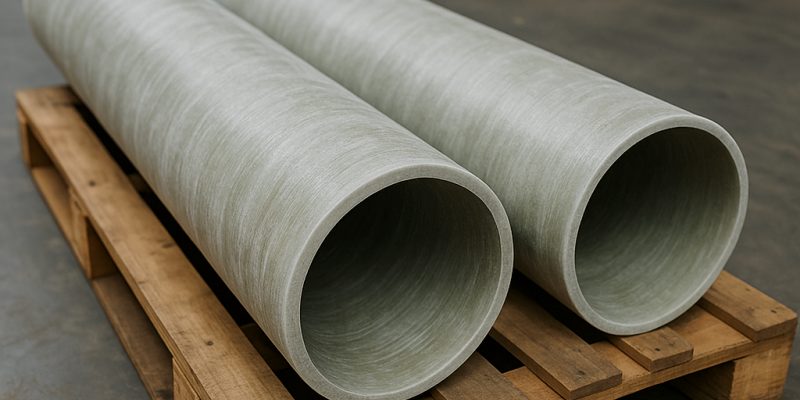
How to Choose the Perfect Fiberglass Bondage Tube
Applications of Spun Fiberglass Tube in Ductwork Systems
Spun fiberglass tube plays an essential role in ductwork systems, offering advantages in both underground and above-ground installations. Its lightweight, durable, and corrosion-resistant properties make it a reliable solution for various ductwork applications. From HVAC systems to underground piping, spun fiberglass tube ensures long-term performance in demanding environments. This section explores its use in underground ducting and compares fiberglass tubes with alternative materials like PVC.
Underground Ducting
Spun fiberglass tube excels in underground ducting by offering high strength-to-weight ratios and excellent moisture resistance. Its smooth interior reduces friction losses, ensuring reliable airflow for buried HVAC and utility conduits. Lightweight sections simplify trench installation, cutting labor time and equipment needs. With minimal thermal expansion and resistance to soil chemicals, these tubes deliver long-term performance beneath roads or landscaping without the corrosion concerns of metal alternatives.
HVAC System Installations
In above-ground HVAC networks, spun fiberglass tube provides inherent thermal insulation and low air leakage. The rigid, yet lightweight sections connect seamlessly with standard fittings, reducing assembly time. Its smooth bore maintains optimal airflow and dampens noise, while the non-conductive material prevents condensation buildup. These properties translate into higher energy efficiency, quieter operation, and a lower maintenance burden compared to metal ductwork.
Corrosion-Resistant Underground Applications
Buried ductwork often encounters acidic or alkaline soil conditions that corrode metal piping. Spun fiberglass tube resists a wide pH range and chemical attack, protecting critical air and fluid lines from degradation. This durability minimizes the need for periodic replacement or cathodic protection, lowering lifecycle costs. Additionally, its inert nature helps prevent contaminants from leaching into surrounding soil, enhancing environmental safety.
Industrial Chemical Exhaust Lines
In chemical processing plants, ventilation lines must resist aggressive fumes and particulate abrasion. Spun fiberglass tube withstands exposure to solvents, acids, and alkalis without sacrificing structural integrity. Its corrosion resistance and smooth interior facilitate easy cleaning and reduce deposit buildup. By maintaining consistent exhaust flow and preventing premature pipe failure, these tubes improve plant safety and uptime in demanding industrial environments.
Telecommunication Conduit Protection
For underground telecom and fiber-optic installations, spun fiberglass tube serves as a robust conduit that shields cables from moisture, soil movement, and root intrusion. Its non-metallic composition prevents electromagnetic interference, preserving signal integrity. Lightweight segments allow rapid deployment in trenches or boreholes, while UV-resistant coatings protect exposed runs. The result is a durable, low-maintenance pathway that safeguards critical communications infrastructure.
Get Affordable Fiberglass Composite Tube for All Purposes
Installation and Maintenance of Spun Fiberglass Tube
Proper installation and regular maintenance are essential for maximizing the performance of spun fiberglass tube in HVAC and ductwork systems. Following specific guidelines ensures that the ducts function efficiently and remain free from damage.
Guidelines for Proper Installation
Pre-Installation Inspection
Before installing spun fiberglass tube, inspect every segment for cracks, chips, or deformities. Check end fittings and seams for factory defects or shipping damage. Verify that gaskets, seals, and hardware are present and intact. Early identification of flaws prevents costly rework and system leaks. Document any issues and replace defective components before proceeding to ensure a smooth, reliable installation process.
Accurate Measurement
Measure the installation space precisely to accommodate spun fiberglass tube dimensions, including diameter, wall thickness, and length. Account for fitting clearances, bends, and support bracket locations. Double-check corner and roof penetrations to avoid misalignment. Accurate measuring prevents gaps that could disrupt airflow or require costly onsite modifications. Maintaining tight tolerances ensures optimal performance and minimizes installation delays.
Secure Connections
Join spun fiberglass tube sections with properly sized couplings and high-quality sealants or gaskets. Apply compatible epoxy or silicone sealant evenly around joints to prevent air leakage. Tighten clamps or banded fittings to the manufacturer’s torque specifications. Ensure that fiberglass tube end fittings seat fully against tube ends and that all sealing surfaces remain clean. Secure, airtight connections maintain system efficiency and prevent energy loss.
Support Systems
Install support brackets and hangers at regular intervals to carry spun fiberglass tube weight and prevent sagging. Position supports near joints and fittings for additional stability. Use corrosion-resistant straps or saddles that match tube curvature and distribute load evenly. Verify that supports do not compress or deform the tube wall. Proper support spacing—typically every 1.5 to 2 meters—ensures long-term alignment and structural integrity.
Adherence to Safety Standards
Follow industry safety guidelines when handling and installing spun fiberglass tube. Wear protective gear—gloves, safety glasses, and respirators—to guard against dust and resin fumes. Ground equipment to prevent static buildup. Comply with local building codes, fire ratings, and ventilation regulations. Review installation manuals and certification requirements. Adhering to safety standards protects installers and ensures that the ductwork system meets all regulatory performance criteria.
Regular Maintenance Tips for Underground and Above-Ground Ducts
Visual Inspections
Regularly examine spun fiberglass tube runs for cracks, dents, or surface abrasions that could compromise structural integrity. Inspect both underground and above-ground sections, paying close attention to areas around bends and fittings. Look for discoloration or material fatigue that may indicate UV damage or soil chemical attack. Early detection of physical damage prevents airflow disruptions and costly emergency repairs.
Cleaning Schedule
Establish a routine cleaning program for spun fiberglass tube ductwork to remove dust, debris, and particulate buildup. Use low-pressure air or soft brushes to avoid damaging the tube’s smooth interior surface. Schedule cleanings every six to twelve months, or more frequently in dusty environments. Consistent maintenance preserves optimal airflow, reduces energy consumption, and extends the service life of the duct system.
Monitor Moisture Levels
Check spun fiberglass tube sections—especially those buried underground—for signs of moisture ingress or condensation. Use moisture meters or visual cues like damp spots and mold growth. Maintain proper drainage around buried ducts and seal any entry points. Keeping moisture levels in check prevents microbial growth, material degradation, and potential health hazards, ensuring the system remains safe and efficient over time.
Inspect Seals and Joints
Periodically verify that all spun fiberglass tube end fittings, couplings, and sealed joints remain airtight. Look for peeling gaskets, cracked sealant, or loose clamps. Reapply compatible epoxy or silicone sealant where needed and retorque banded fittings to the manufacturer’s specifications. Well-maintained seals preserve system efficiency, prevent energy loss, and avoid pressure imbalances that could strain HVAC equipment.
System Testing
Conduct formal airflow and pressure-drop tests on spun fiberglass tube ductwork at least annually. Use calibrated anemometers or manometers to measure flow rates and detect blockages or leaks. Compare results to design specifications and adjust balancing dampers as required. Regular performance testing ensures that both underground and above-ground duct runs operate within optimal parameters, supporting reliable HVAC performance and energy efficiency.
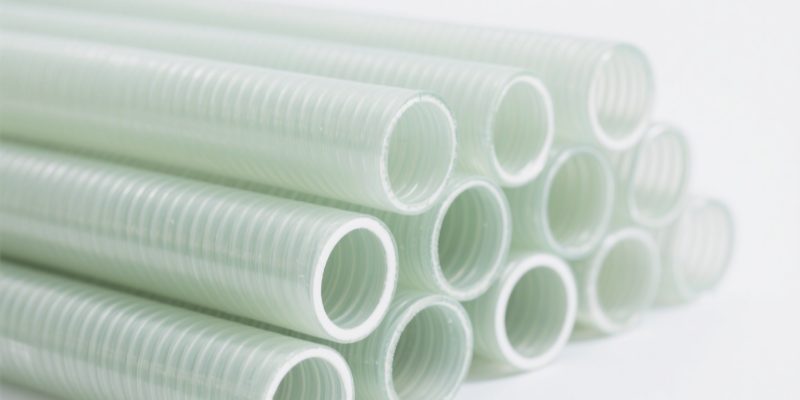

As the editor of GangLong Fiberglass, I have years of experience and in-depth research, focusing on cable tray products, fiberglass solutions, and grille systems. I incorporate years of industry insights and practical experience into every content, committed to promoting the progress of the industry. At GangLong Fiberglass, my commitment is reflected in every product, from innovative cable trays to durable fiberglass solutions and sturdy grille systems. As an authoritative voice in the industry, my goal is to provide valuable information to professionals and businesses and promote forward-looking solutions.

